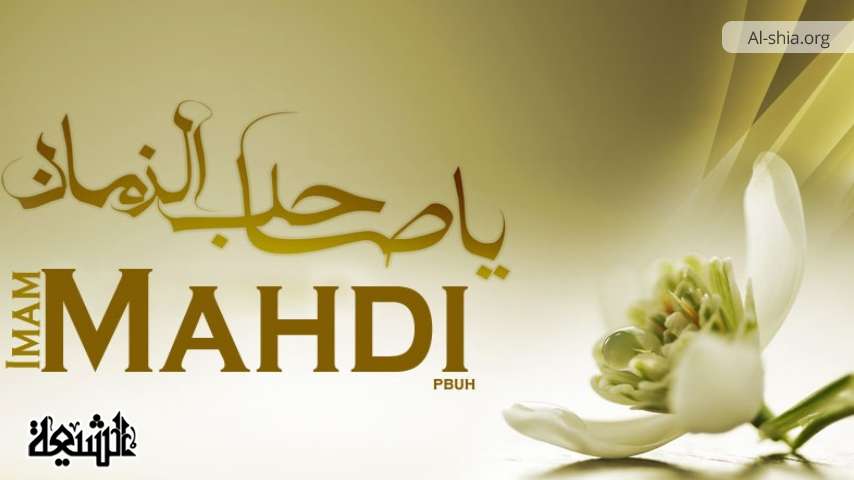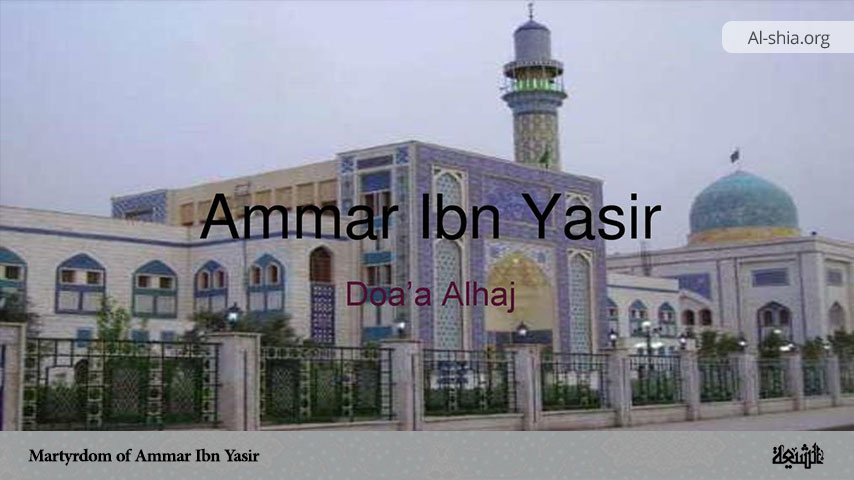Introduction
The birth of Imam Muhammad ibn Hasan [Popularly referred to as Imam al-Mahdi (a.s)], the twelfth and final Imam in the lineage of the pure Prophet’s Household [Ahl al-Bayt (a.s)], is one of the most significant events in Islamic history. Revered as the awaited leader who will establish a world of equity and eradicate oppression, his birth is a source of hope and inspiration for millions of Muslims. The commemoration of this momentous occasion transcends mere celebration; it is a time for reflection on his mission, renewal of faith, and reaffirmation of commitment to the principles of justice, unity, and moral excellence. The life and legacy of Imam al-Mahdi (a.s) remind believers of the enduring presence of divine guidance and their responsibility to prepare for his reappearance by fostering righteousness within themselves and their communities.
This study aims to explore the significance of the birth of Imam al-Mahdi (a.s), emphasizing its historical, spiritual, and social dimensions. It aims to highlight the relevance of his birthday in fostering hope, justice, and moral responsibility among Muslims, while encouraging reflection on the role of believers in preparing for his awaited reappearance.
His Noble Lineage
Imam Muhammad ibn Hasan al-Mahdi (a.s) descends from the Prophet Muhammad (PBUHH) through his daughter, Lady Fatimah al-Zahra (a.s), and Imam Ali (a.s). He is the nineth grandson of Imam Husain. He was named Abu al-Qāsim Muhammad, the same name and kunya as the Holy Prophet of God[1]. His father, Imam Hassan al-Askari (a.s), the eleventh Imam[2],(a.s), played a crucial role in keeping his birth a secret due to the political persecution of the Abbasid Caliphate. His mother, Lady Narjis[3] (s.a) was based on the account of Shaykh Ṣadūq[4] was a Roman princess. According to al-Mufid, Lady Narjis was a slave girl born and raised in the house of Hakima Khatun; daughter of Imam Muhammad al-Jawad (the ninth Imam) and paternal aunt of al-Askari[5]. Lady Narjis is a woman of extraordinary virtue and faith, chosen for the sacred role of being the mother of the awaited savior. According to historical sources, she was brought to Samarra through divine planning and was spiritually prepared for this mission.
His Birth
There are differences on the birthdate of Imam Muhammad ibn Hasan al-Mahdi (a.s) but a popular opinion is that he was born on the 15th of Sha’ban, 255 AH (869 CE)[6], in Samarra, Iraq. Meanwhile, it is pertinent to mention that due to the Abbasid caliphs’ relentless pursuit of the awaited Imam, his birth was kept hidden from the general public. His father introduced him only to a few of his most devoted followers[7].
His Teknonyms and Titles
Imam Muhammad ibn Hasan (a.s) has different teknonyms and titles, the best-known of which are: al-Mahdi (The Rightly guided), Qā’im (The One who rises up), Ṣāḥib al-Zamān ( The Master of the time), al-Hujjah/Hujjat Allah (The Proof [of God]), al-Muntaẓar (The Awaited), Baqīyyat Allāh (The Remnant of God), al-Muntaqim (The Avenger), al-Maw’ūd (The Promised), Khātam al-Awṣīyā’ (The Last Successor), al-Ghā’ib (The Hidden), al-Ma’mūl (The Hoped), and al-Muḍṭarr (The Distressed)[8].
Theological Significance of His Birth
The birth of Imam Muhammad ibn Hasan (a.s) is not just a historical event but a moment of profound theological significance in Islamic belief, particularly within the Shi’a tradition. His birth is seen as the fulfillment of divine promises regarding the continuation of divine guidance through the Imams and the eventual establishment of justice on earth.
- Quranic References and Prophetic Predictions: Although the Qur’an does not mention Imam Mahdi (a.s) explicitly by name, many verses are interpreted by Islamic scholars as references to his mission. Some of the most cited verses include: “And We desired to bestow a favor upon those who were oppressed in the land, and to make them leaders and to make them the inheritors.” (Qur’an 28:5) – Interpreted as a prophecy of the ultimate triumph of divine leadership through Imam Mahdi (a.s). While explaining the verse and its relation to the Imam Mahdi (a.s), Ayatollah Faqih Imani writes: “And a vaster example of it will be the advent of the government of Justice and Truth all over the world by Hadrat Mahdi (may our souls be sacrificed to him). These verses are among the verses that clearly give the glad tidings of the advent of such a government. Some Islamic traditions indicate that, commenting on this verse, the Imams of Ahl-ul-Bayt (as) have pointed to this great advent[9].” And: “And indeed, We have written in the Psalms after the Reminder that ‘My righteous servants shall inherit the earth.’” (Qur’an 21:105) – Seen as an indication of the role of Imam Mahdi (a.s) in establishing divine justice[10].
Similarly, numerous hadiths from the Prophet Muhammad (PBUHH) emphasize the coming of a divinely guided leader from his progeny: The Prophet (PBUHH) said: “If only one day of this time (world) remained, Allah would raise up a man from my family who would fill this earth with justice as it has been filled with oppression[11].”
- The Final Divine Leader in Islam: Imam Muhammad ibn Hasan (a.s) is the twelfth and last Imam in the lineage of the Ahl al-Bayt (a.s), and his birth ensures the continuation of divine leadership[12]. His existence represents the concept of divine governance and the necessity of an infallible guide for the Muslim ummah. Shi’a theology holds that divine wisdom necessitates that the world must always have a Hujjah (proof of God). Imam Mahdi (a.s), even in occultation, remains the Hujjah of Allah on earth, ensuring that divine guidance is preserved.
- The Concept of Occultation (Ghaybah) and its Wisdom: The secrecy surrounding his birth is closely tied to the doctrine of Ghaybat (Occultation). Imam al-Mahdi (a.s) was born at a time of intense persecution, and his occultation was necessary for his protection and the fulfillment of his mission. Shi’a scholars explain the occultation with the following wisdoms:
- Preserving the Last Imam: Just as Prophet Musa (a.s) was hidden from Pharaoh’s persecution, Imam al-Mahdi (a.s) was hidden from the Abbasid rulers.
- Testing the Faithful: The occultation serves as a test for believers to remain steadfast in their faith and prepare for his reappearance.
- Spiritual Presence and Guidance: Even though he is not physically visible, he continues to guide and inspire the ummah through his influence on scholars and righteous individuals.
- The Symbol of Hope and Justice: The birth of Imam Muhammad ibn Hasan al-Mahdi (a.s) represents hope for the oppressed and the promise of ultimate justice. Throughout history, believers have turned to his existence as a source of spiritual motivation, believing that his return will restore fairness and eliminate tyranny. The global expectation of a savior, found in various religious traditions, aligns with the Islamic belief in Imam Mahdi’s (a.s) mission.
- The Role of the Believers in His Mission: Islamic teachings emphasize that Imam al-Mahdi’s (a.s) mission is not passive; rather, believers are expected to actively prepare for his reappearance. This includes: strengthening faith and moral character, establishing justice in personal and societal life, and awaiting his return with patience and devotion.
Commemoration of His Birthday
The birthday of Imam Muhammad ibn Hasan al-Mahdi (a.s), celebrated on the 15th of Sha’ban, is one of the most spiritually significant occasions in the Islamic calendar. This event is marked by various acts of worship, community gatherings, and expressions of devotion to the Awaited Savior. The commemoration serves as both a reminder of his divine mission and an opportunity for believers to renew their commitment to his teachings.
- Spiritual and Religious Practices: The Night of 15th Sha’ban is considered highly sacred in Islamic tradition. It is a night when divine blessings are believed to descend upon the earth. Believers engage in special Supplications (Dua), recitation of the Qur’an, charity and acts of kindness, community service etc.
- Public Celebrations and Cultural Traditions: Many communities organize processions, poetry recitations, and lectures on the life of Imam Mahdi (a.s) and his role in Islamic eschatology. Scholars and religious leaders deliver sermons on the significance of waiting for and preparing for his reappearance. In many Muslim countries, particularly in Iran, Iraq, and Lebanon, mosques, shrines, and streets are decorated with lights and banners to celebrate the joyous occasion.
- Preparing for His Reappearance: The commemoration is not just about celebration but also about reflecting on the responsibilities of believers in his absence. Islamic scholars emphasize strengthening faith and moral character; spreading justice and opposing oppression; raising awareness about Imam Mahdi (a.s) and his teachings, and maintaining patience and perseverance in awaiting his reappearance. Holy Prophet (s.a.w.a) is reported to have said: “The best worship is awaiting the reappearance [13].”
Conclusion
The birth of Imam Muhammad ibn Hasan (a.s) marks a turning point in Islamic history, signaling the fulfillment of divine promises regarding a savior who would lead humanity toward justice. His birth is a pivotal event in Islamic theology, marking the beginning of the final divine leadership on earth.
The birthday of Imam Mahdi (a.s) is a profound reminder of the divine promise of justice and guidance for humanity. Celebrated with devotion and hope, this occasion inspires Muslims to renew their faith, uphold moral values, and actively work towards justice and unity in their communities. It serves as a spiritual beacon, urging believers to prepare for his reappearance through righteousness, self-improvement, and collective efforts to combat oppression. The legacy of Imam Mahdi (a.s) continues to illuminate the path toward a world of peace, equity, and divine harmony.
References
[1] . Tabatabai, Sayyid Mohammad Hosayn, Shi’ite Islam, p. 185.
[2] . Shaykh Mufid, Kitab al-Irshad, p. 493.
[3] . Khudāmurād Sulaymān, Farhangnāma-yi Mahdawīyyat, p. 371.
[4] . Ṣadūq, Muḥammad ibn ʿAlī, Kamāl al-dīn wa Tamām al-Niʿmah, vol. 2, p. 417.
[5] . Hussain, Jassim M, Occultation of the Twelfth Imam: A Historical Background, p. 70.
[6] . Muqaddasī, Yad Allāh. Bāzpazhūhī-yi Tārīkh-i wilādat wa shahādat-i Maʿṣūmān, p. 597; Khudāmurād Sulaymān, Farhangnāma-yi Mahdawīyyat, p. 192.
[7] . Sachedina, Abdulaziz Abdulhussein, Islamic Messianism: The Idea of Mahdī in Twelver Shīʻism, pp. 39, 40.
[8] . Momen, Moojan, An Introduction to Shi’i Islam, p. 165.
[9]. Sayyid Kamal Faqih Imani, An Enlightening Commentary into the Light of the Holy Qur’an vol. 13, p. 155.
[10] . Ibid, vol. 10, p. 183
[11] . Sunan Abi Dawud 4283 https://sunnah.com/abudawud:4283
[12] . The Holy Prophet has predicted the twelve caliphs to rule over the religion and Imam Mahdi is believed to be the twelfth Caliph. Sahih Muslim 1821d https://sunnah.com/muslim:1821d; Sunan Abi Dawud 4279 https://sunnah.com/abudawud:4279
[13] . Ṣadūq, Muḥammad ibn ʿAlī, Kamāl al-dīn wa Tamām al-Niʿmah, vol.1 Pg.287.


















